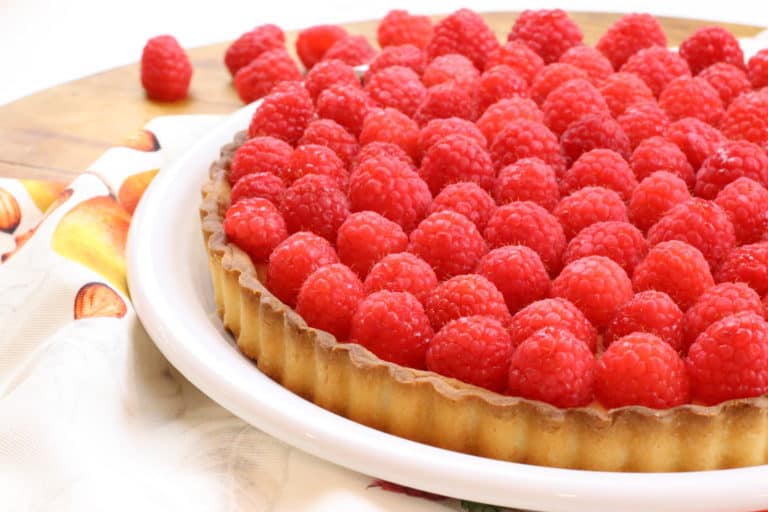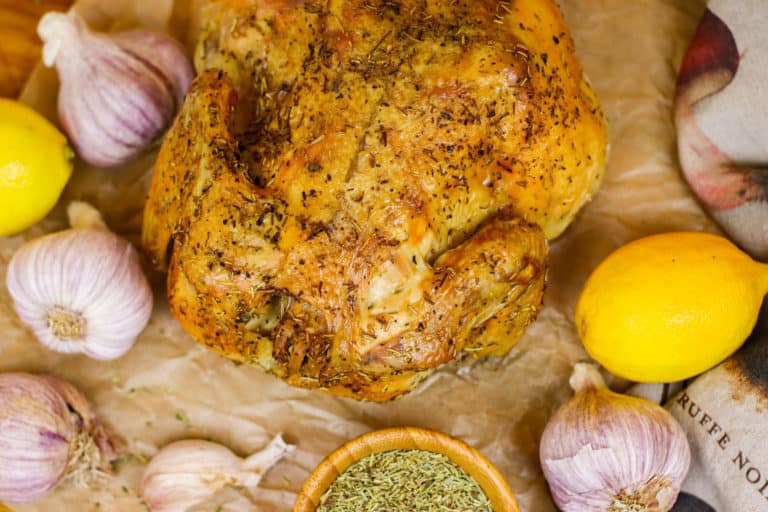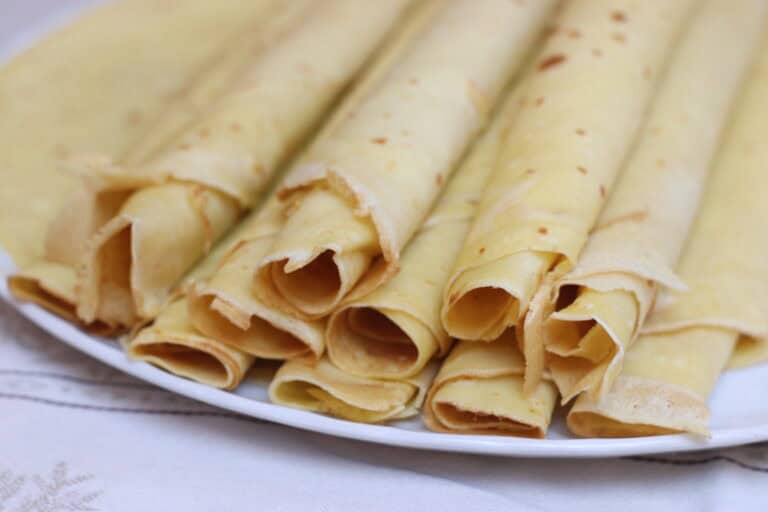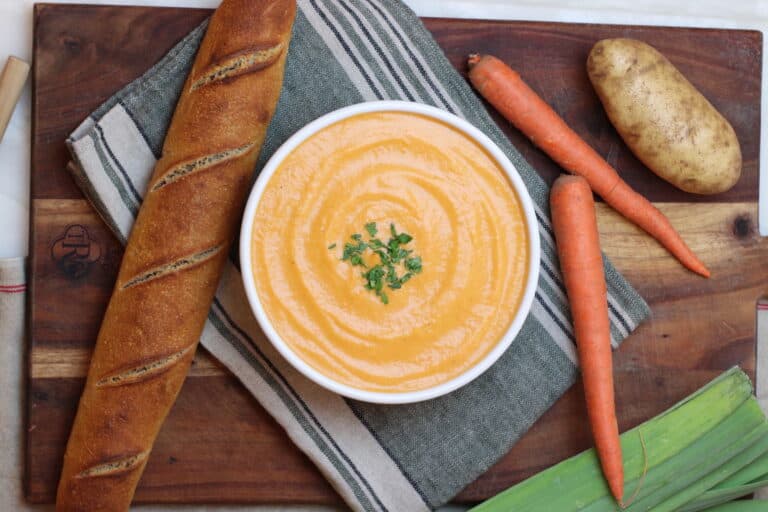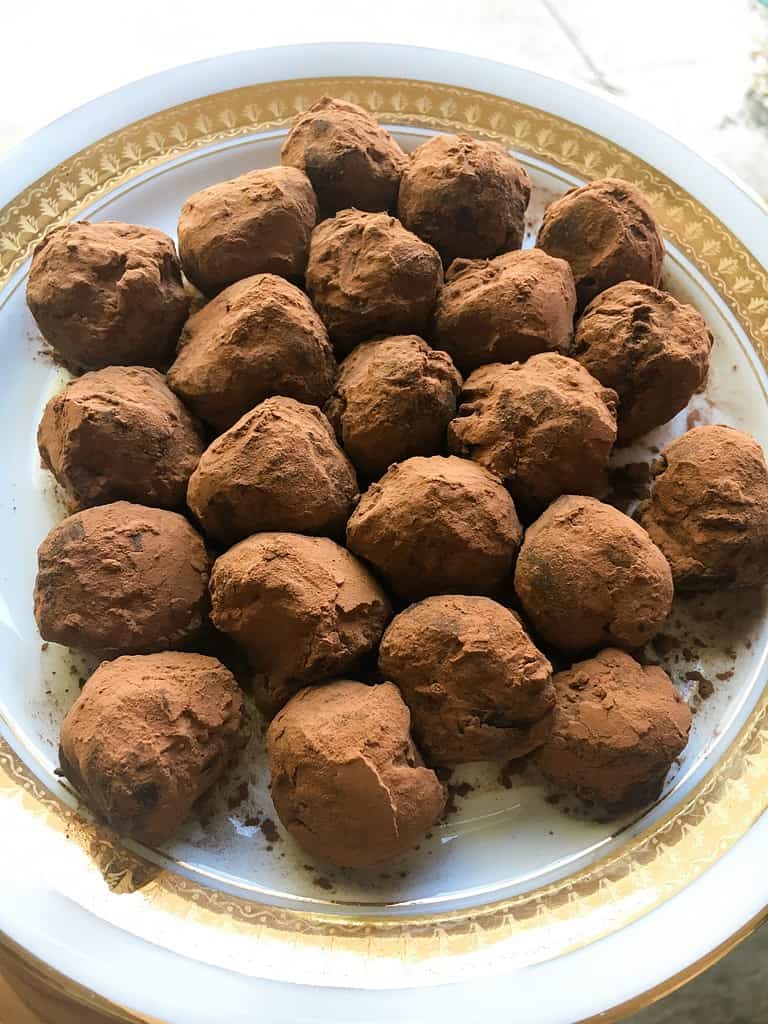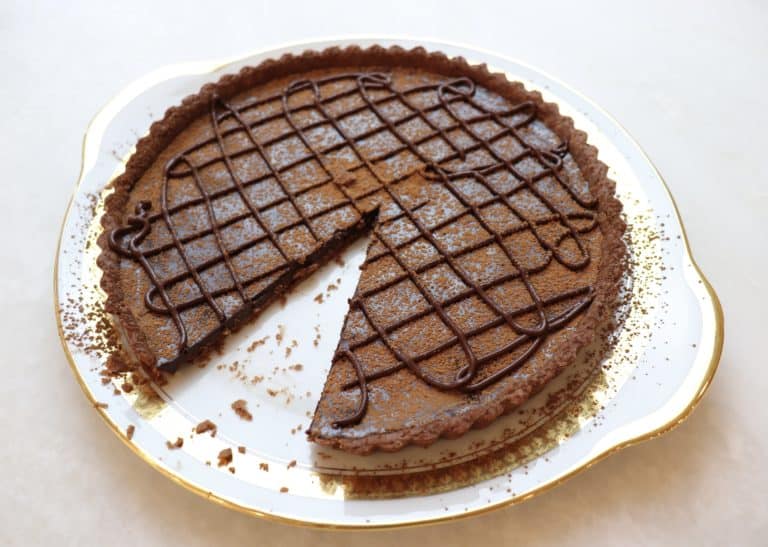This post may contain affiliate links. Read our full disclosure policy here.
There are many ways to prepare ratatouille, but in my French family’s kitchen, the best ratatouille recipe is always made the traditional way — cooking the vegetables separately in olive oil, then simmering them together just long enough for the flavors to mingle. The result? A vibrant vegetable stew where every piece retains its shape, color, and taste.
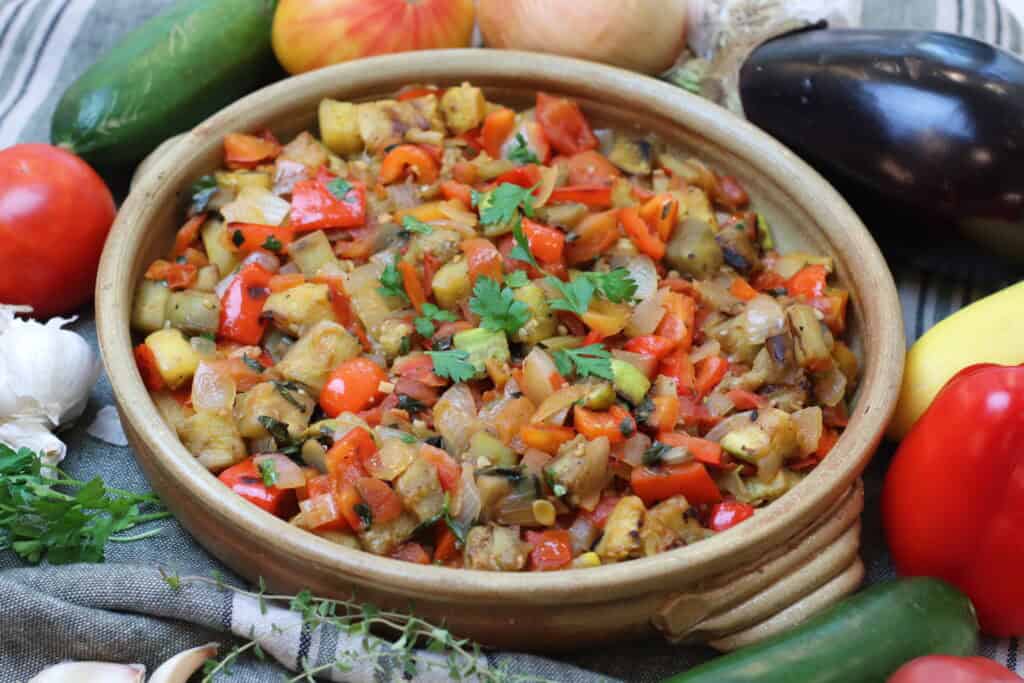
Unlike some versions (such as confit byaldi, the beautifully layered style made famous in movies), this rustic peasant dish is the version you would find in Provence. It’s simple, hearty, and full of flavor — exactly the kind of good food that would be served on a French farmhouse table in late summer.
The Secret to Great Ratatouille
The only problem with tossing all the vegetables in a pot together is that they often collapse into a mushy mixture. The best ratatouille recipe respects each ingredient: sautéing them one by one in a large skillet with a few tablespoons of olive oil over medium heat. This extra step is the different between an average ratatouille, and an amazing ratatouille.
Another tip: ratatouille tends to be more eggplant-heavy. That doesn’t mean the ratios are rigid — if you have more zucchini and fewer peppers, that’s perfectly fine. Think of it as flexible French farmhouse cooking, guided more by what fresh produce is available at the market, rather than by exact measurements.
If you are purchasing your produce at a grocery store, choose local and organic, when possible.
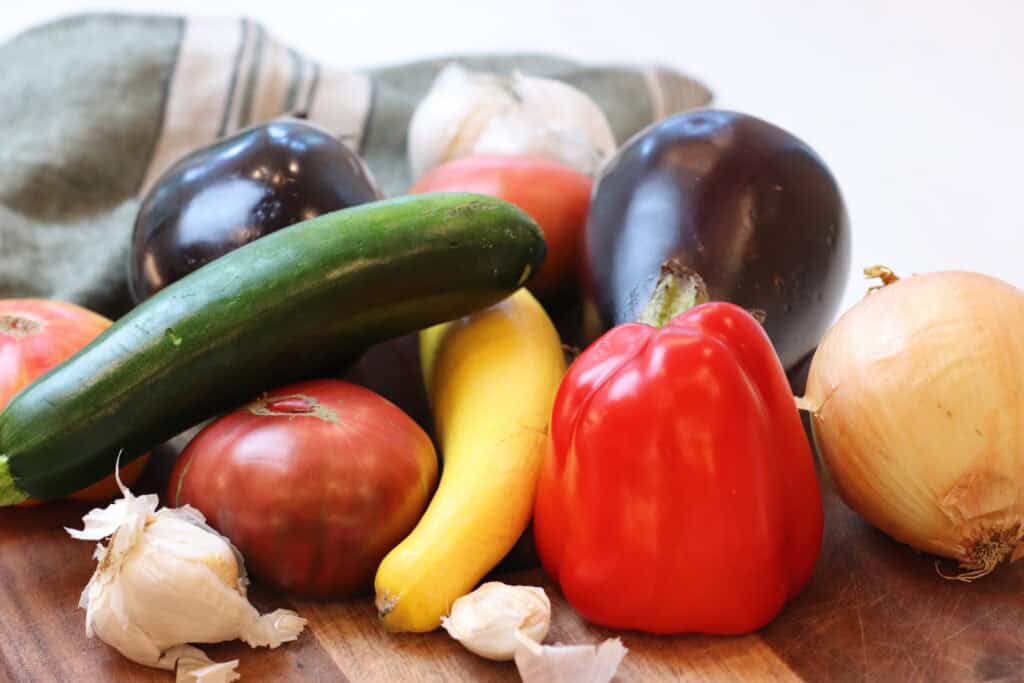
Preparing the Vegetables
- Eggplant, zucchini and yellow squash: After pealing, place the diced pieces in a bowl, sprinkle them with salt and let them rest at room temperature for 20–30 minutes. This draws out excess moisture. Drain the liquid from the bowl and pat them dry with paper towels before cooking.
- Peppers and onions: Feel free to use a colorful mix — red bell peppers, yellow peppers, or green peppers, and yellow onion. This adds sweetness and color.
- Tomatoes: Ripe, fresh tomatoes are best. You can also use chopped tomatoes or a can of diced tomatoes from the grocery store if needed. When using canned tomatoes, I recommend Muir Glen brand.
- Fresh Herbs: A bouquet of fresh thyme, basil and parsley works great. I prefer fresh herbs, but a teaspoon or two of Herbes de Provence would work too.
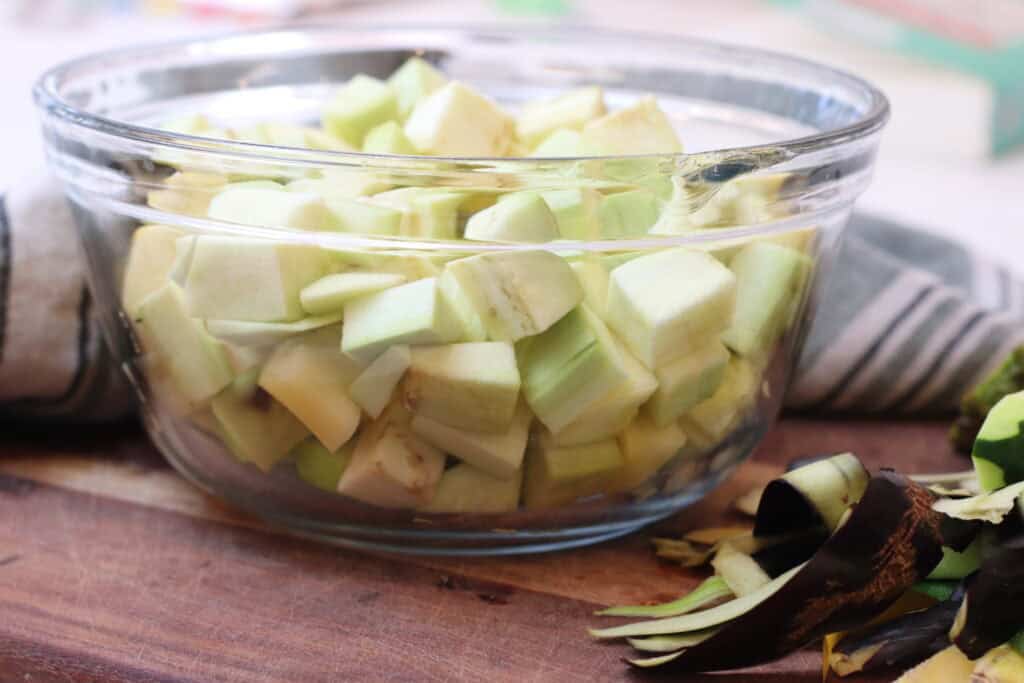
Cooking Traditional Ratatouille
- Set a large skillet next to a large pot (cocotte) on the stove top.
- In the skillet, heat 2–3 tablespoons of olive oil over medium-high heat. Cook eggplant, zucchini, and yellow squash until golden. Keep the vegetables in a single layer, and don’t overcrowd the skillet. Then transfer to a large pot or dutch oven (heat turned off for now).
- Repeat with the peppers, adding oil as needed to keep the bottom of the skillet coated. The goal is achieve a nice caramelization on the vegetables. Transfer to the large pot.
- Next, cook the garlic until fragrant, about 1 minute. Add the onions to the skillet and cook until translucent. In the same skillet, add the tomatoes and cook until they break down into a simple onion mixture with sauce-like consistency.
- Add them to the pot and turn the heat to low.
- Season with fresh herbs, black pepper, and salt to taste.
- Let everything simmer gently, uncovered, over low heat for about 15 minutes, until the juices have reduced. Don’t overcook — the goal is for vegetables to hold their shape while flavors marry.
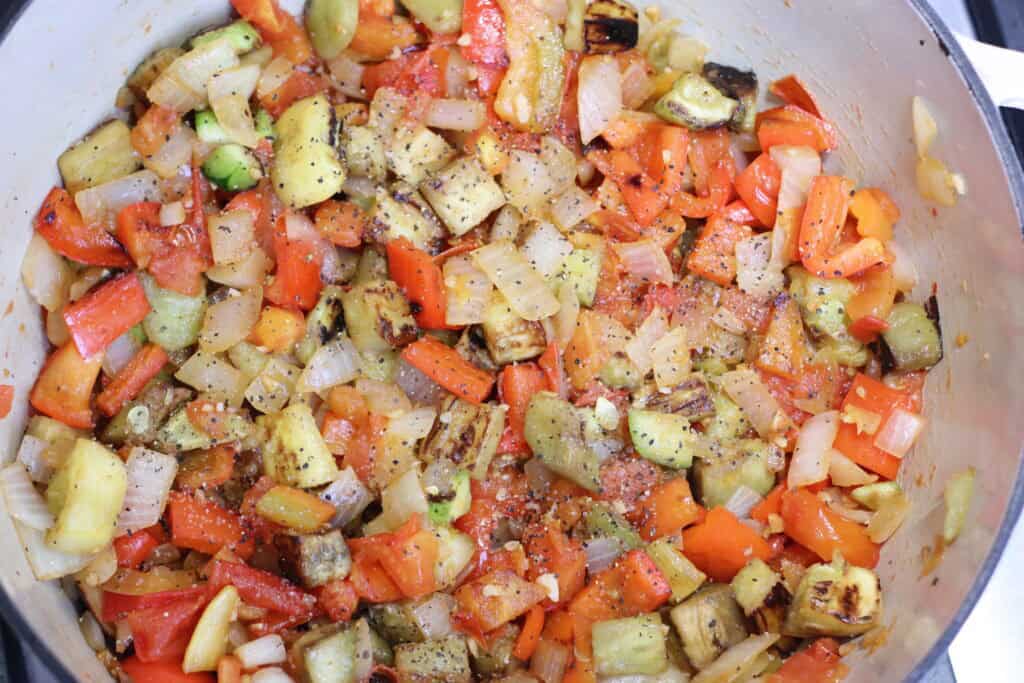
A Nourishing Perspective: This classic Provençal recipe reminds us that healthy eating needn’t be complicated — just fresh, seasonal, and shared.
What to Eat with Ratatouille
Ratatouille is one of those versatile dishes that can play many roles at the table — a main course, a side, or even a starter. Its medley of summer vegetables pairs beautifully with so many French favorites. Here are a few ideas for serving it.
As a Main Dish
Serve ratatouille as the centerpiece of a simple, nourishing meal.
- With crusty bread — A warm baguette or rustic country loaf to soak up the juices.
- Over puréed potatoes or couscous — Makes it a heartier vegetarian option.
- With poached or fried eggs — A Provençal favorite; the yolk mingles beautifully with the vegetables.
As a Side
Ratatouille also makes a perfect side for meat or fish.
- With roasted chicken — Especially good with lemon and herbs.
- With grilled fish — Think cod, sea bass, or salmon for a light summer meal.
- With lamb or steak — Its sweetness balances richer flavors.
As a Starter
Serve it warm or at room temperature to start a French-style meal.
- On toasted baguette slices with a drizzle of olive oil — Like a rustic Provençal bruschetta.
- With goat cheese — A little crumble on top adds creaminess and tang.
- Alongside a simple green salad — Fresh greens and vinaigrette complement its softness.
Ratatouille often tastes even better the next day, once the flavors have mingled — so don’t hesitate to make it ahead and enjoy it over several meals.
How to Store Leftover Ratatouille
One of the best things about homemade ratatouille is that it actually improves with time. The flavors have a chance to mingle, making it even better the next day.
- Refrigerator: Let the ratatouille cool to room temperature, then transfer it to an airtight container. It will keep well in the fridge for up to 4 days. Serve cold, or reheat gently.
- Freezer: For longer storage, portion the ratatouille into freezer-safe containers. It freezes beautifully for up to 3 months. To use, thaw overnight in the refrigerator and reheat gently on the stove top over medium heat.
- Reheating tip: Warm slowly, just until heated through. This preserves the texture of the vegetables and prevents them from becoming too soft.
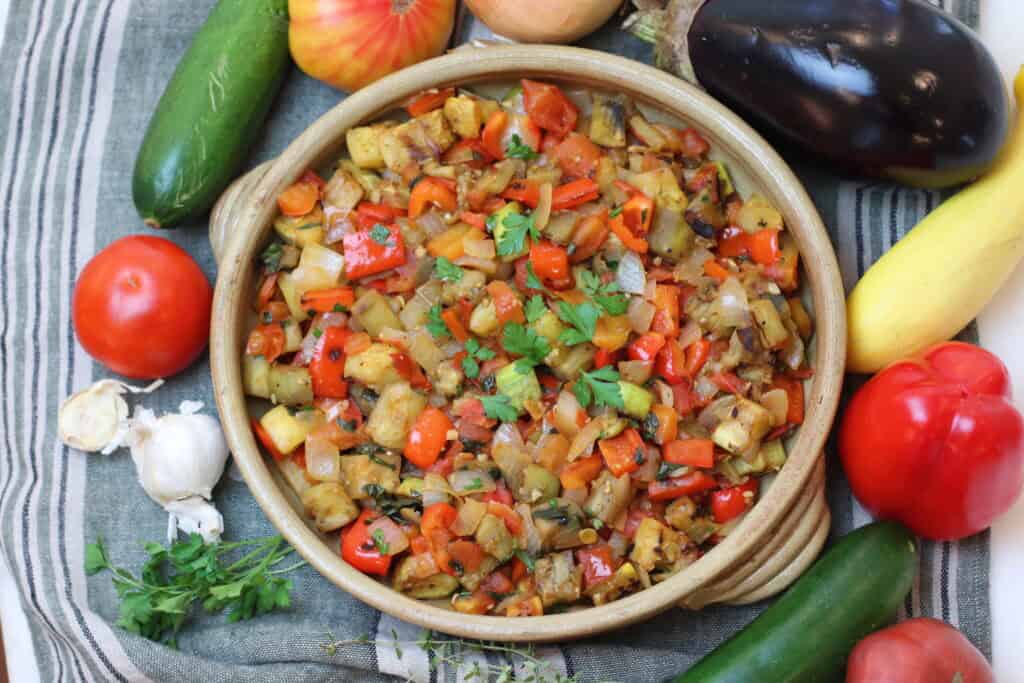
Final Thoughts
Ratatouille is more than a recipe — it’s a taste of Provence, a celebration of fresh vegetables and late summer produce, and a reminder that a classic French dish doesn’t need fuss to be delicious. With just a few simple steps, you’ll have a tasty dish that’s equally at home on a casual weeknight as it is on special occasions. I hope that you enjoy this dish as much as my family does.
Bon appétit,
Gaby
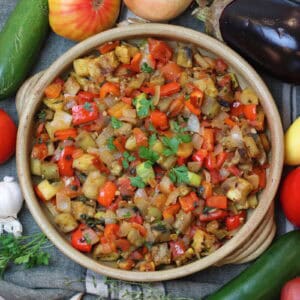
The Best Homemade Ratatouille – A Classic French Recipe
Equipment
- 1 large skillet
- 1 Large Pot
- 1 large bowl
- Paper towels
Ingredients
- 2-3 tbsp. olive oil plus more as needed
- 1 tsp. salt
- 1/4 tsp. ground black pepper
- 1 lb. eggplant pealed and diced into 1 inch cubes
- 1 lb. zucchini pealed and diced into 1 inch cubes
- 1 lb. yellow squash pealed and diced into 1 inch cubes
- 2 bell peppers any color
- 3 cloves garlic minced
- 1 large yellow onion chopped
- 1 lb. ripe tomatoes 1 can or 15 oz. diced tomatoes
- 2 tbsp. parsley chopped
- 1 tbsp. basil chopped
- 1 tbsp. thyme leaves
Instructions
Prepare the Vegetables
- Dice the eggplant, zucchini, and yellow squash. Place in a large bowl, sprinkle with 1 tsp salt, and toss. Let sit 15–20 minutes to draw out moisture.
- Pour off any liquid, spread the vegetables onto paper towels, and pat dry thoroughly.
- Dice the bell peppers, mince the garlic, chop the onion, and dice the tomatoes (or open the can). Set aside.
Cooking the Ratatouille
- Heat 2–3 tbsp olive oil in a large skillet over medium heat. Cook the eggplant, zucchini, and squash in a single layer until golden, then transfer to a large pot. Repeat with the remaining eggplant, zucchini, and squash mixture adding more oil as needed.
- Cook the bell peppers in the skillet until lightly browned, then transfer to the pot.
- Add garlic to the skillet and sauté for 1 minute until fragrant. Add onion and cook until translucent. Stir in the tomatoes and cook until they begin to break down into a sauce.
- Transfer the tomato mixture to the pot with the other vegetables.
Simmer the Ratatouille
- Gently stir all vegetables together. Add remaining black pepper, parsley, basil, thyme, and more salt to taste.
- Simmer uncovered over low heat for 10–15 minutes, just until the juices reduce slightly and the flavors meld.
Notes
- Ratatouille is flexible — use what you have, though it’s traditionally more eggplant-heavy.
- Doubles or triples easily for a crowd.
- Serve warm with roasted meat, or vegetarian-style over creamy potatoes.
- Can be served hot as a main, warm as a side, or cold as a starter.
- Even better the next day after flavors meld.
- Store cooled ratatouille in an airtight container in the refrigerator for up to 4 days.
- Freeze for up to 3 months; thaw overnight in the fridge.
- Reheat gently on the stove over medium heat until warmed through.


